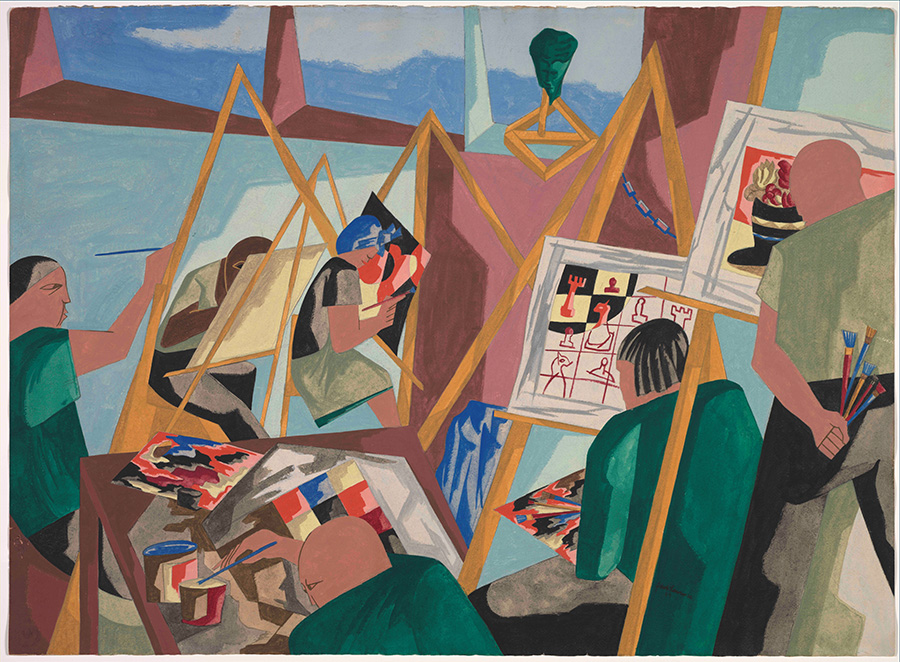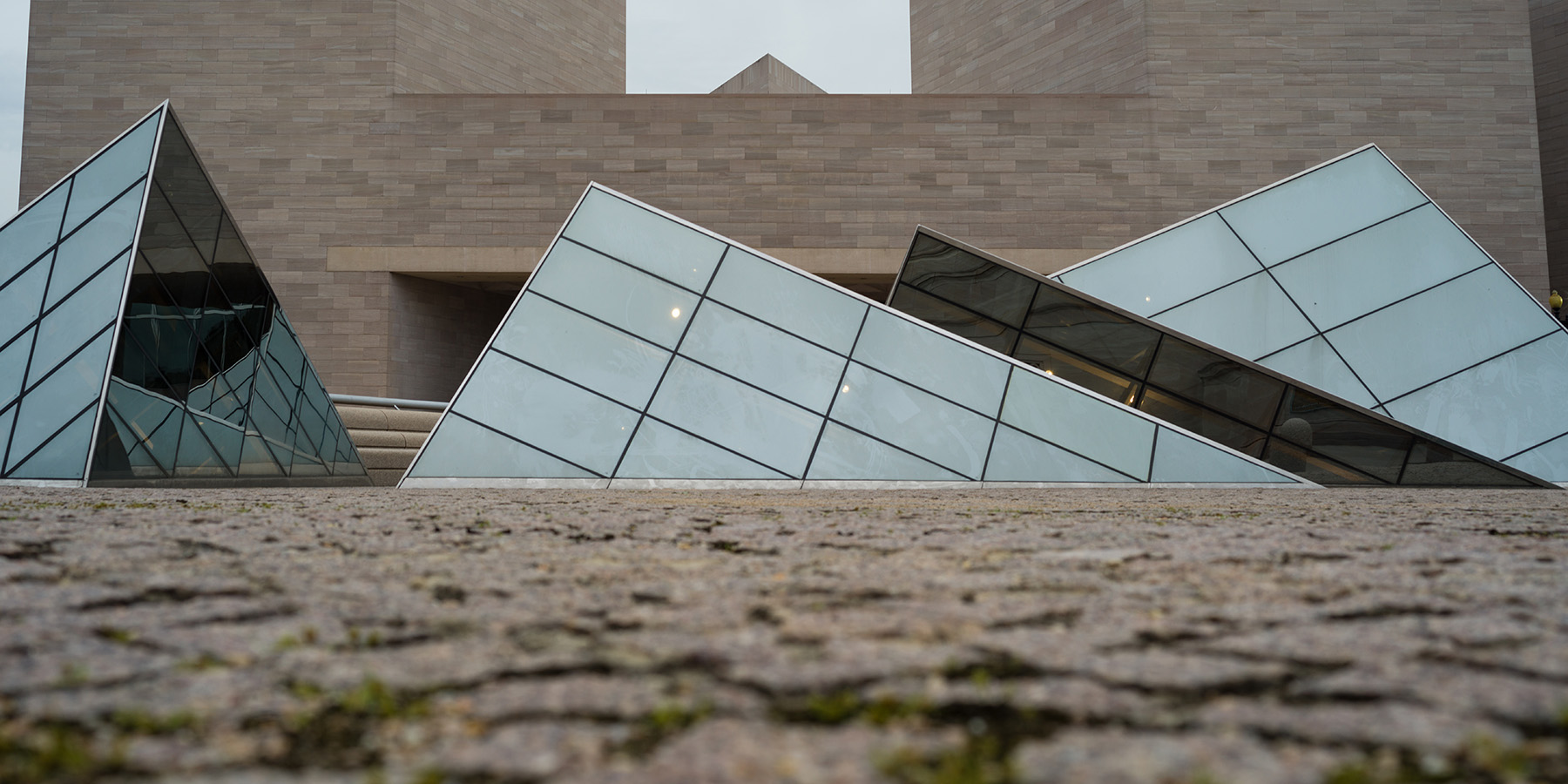Tanya Sheehan
After Harlem Hospital: Modern Medicine and African American Art

Jacob Lawrence, Psychiatric Therapy, 1949, casein tempera on paper, 18 1/4 × 23 1/4 in., private collection. Image courtesy of Treadway Gallery, Cincinnati, Ohio. © The Jacob and Gwendolyn Lawrence Foundation, Seattle / Artists Rights Society (ARS), New York
The Center fellowship I held in March and April 2023 enabled me to significantly advance my current book project, which looks at modernist painting by African American artists between the 1930s and 1950s. The project considers the pressing questions about medicine and public health that artists posed in this period, especially as they pertained to urban Black communities in the United States. Using the visual language of modernism, they asked how, where, to whom, and by whom healthcare should be provided. Some artists imagined new ways of thinking about the body and self in clinical contexts, while others created work that functioned as acts of care.
The book focuses on the circle of artist Charles Alston, who was involved in the professional training of many Black artists in New York in the wake of the Harlem Renaissance, most famously Jacob Lawrence. When Alston became the first Black supervisor to be hired by the WPA Federal Art Project, he enlisted a community of young painters to create a monumental mural cycle at Harlem Hospital between 1936 and 1940. My project begins with this foundational mural project and traces the understudied artistic reflections on medicine to which it gave rise in subsequent decades, from Alston’s illustrations for medical journals to Georgette Seabrooke Powell’s training as an art therapist.
While in residence at the Center, I consulted a deep bibliography supported by the National Gallery of Art Library; conducted primary-source research at the Smithsonian’s Archives of American Art and Howard University Libraries; obtained image reproductions and rights for the book’s chapters; and completely drafted chapter 4, which examines Lawrence’s treatment for depression and anxiety at a psychiatric hospital in Queens in 1949–1950.

Jacob Lawrence, Creative Therapy, 1949, casein over graphite, sheet: 22 1/16 × 30 1/16 in., The Cleveland Museum of Art, Delia E. Holden Fund 1994.2. © The Jacob and Gwendolyn Lawrence Foundation, Seattle / Artists Rights Society (ARS), New York
Shortly after Lawrence’s final discharge from Hillside Hospital, his art dealer Edith Halpert issued a press release announcing the exhibition of his latest series of artworks at her Downtown Gallery in New York. The gallery claimed that these 11 casein paintings offer “direct observation” of the “life of patients in a private sanitarium for the mentally ill,” including their “daily activities” and the “different types of therapy” they received. The American press responded quickly to the news, launching a body of art criticism that connects the paintings to Lawrence’s encounter with mental illness at Hillside. My chapter begins by analyzing the strategies that criticism adopted—from qualified comparison to the “mad genius” Vincent van Gogh to insistence that Lawrence’s paintings “express the healthiest portion of his personality”—and how it has shaped predominantly psychobiographical readings of the series. The chapter goes on to reinterpret the artworks themselves, not as mirrors of Lawrence’s mental health crisis or psychological rehabilitation, but as historically and culturally contingent statements on the relationship between the visual arts and therapy, and between race and mental health. To do this, it situates the Hospital series in conversation with the voluminous medical literature that emerged around the various therapies administered at Hillside at the time of Lawrence’s hospitalization, some of which was authored by doctors who treated the artist. The names of those therapies live on in the titles of paintings like Psychiatric Therapy and Creative Therapy. So, too, I argue, do the social and political discourses in which they participated, from romantic notions of madness as a source of creativity to the pathologization of Blackness in the psychology of American race relations.
The book’s critical reflections on the long and troubled relationship between race and medicine in the United States are especially relevant today, as a coronavirus pandemic that has disproportionately affected Black Americans intersects with nationwide protests against systemic racism. Among the questions it explores at the intersection of art history, critical race studies, and critical medical humanities are: In what ways do dominant medical discourses and practices create and reinforce larger structures of racial inequity and injustice? How do medical practices make ideas about race visible or invisible, and how do such practices participate in the work of race-making? How have the arts and popular culture exposed—or concealed—racial bias in diagnosis and treatment, racial disparities in access to care, and the exploitation of racialized subjects in biomedical research?
Colby College
Beinecke Visiting Senior Fellow, spring 2023
In fall 2023, Tanya Sheehan will return to Colby College as Ellerton M. and Edith K. Jetté Professor of Art and principal investigator of Colby’s 2021–2024 Public Humanistic Inquiry Lab devoted to critical perspectives on medicine and race. She will also begin a new position at the college as Humanities Division chair, while continuing to serve as executive editor of the Smithsonian’s Archives of American Art Journal.
